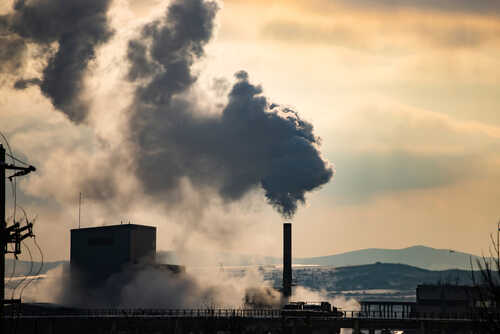
(PresidentialHill.com)- Federal environmental officials have insisted that the air quality for both outdoor and residential areas are normal in the region of East Palestine, Ohio, after a train carrying toxic chemicals derailed in early February.
Yet, some experts are suggesting that is not the case at all.
On Sunday, the Environmental Protection Agency held a news conference about this topic. Its regional administrator, Debra Shore, provided many updates during the conference, saying the agency so far conducted almost 600 home screenings and that they are continuing to monitor air quality from 15 different stations in the community.
Shore said there haven’t been any reported “exceedances” for air quality standards in residential environments and that the air quality outdoors is normal as well.
Some science experts from Carnegie Mellon University and Texas A&M are conducting air quality tests of their own from a mobile testing unit that’s based in the community, and they report that concentrations of nine different chemicals that are potentially harmful are “higher than normal.”
The researchers also warned that if these chemicals were to persist at the elevated levels, residents in East Palestine could experience long-term health issues.
The scientists did say the findings they’ve gotten from their testing didn’t represent an “immediate health concern.” But, they did add that if people were repeatedly exposed to the chemicals over a longer period of time, it could have damaging consequences.
One of the researchers, Dr. Albert Presto of Carnegie Mellon University, spoke with WKBN, a local news outlet in Ohio, recently. He said:
“That material that’s dumped onto the ground or into the water could re-emit from the ground whenever the temperature changes or whenever it’s windy.
“It’s not elevated to the point where it’s necessarily like an immediate ‘evacuate the building’ health concern. But, we don’t know necessarily what the long-term risk is or how long that concentration that causes that risk will persist.”
The team of researchers has used this mobile testing van for the last 10 years to analyze how air pollution and quality is different in cities such as Baltimore and Pittsburgh. They also compared the data they collected to the levels that the EPA recorded this month of the same chemicals.
The chemical that the researchers said was among the most concerning for residents in the area was Acrolein. The U.S. Centers for Disease Control & Prevention said that this chemical can either be a gas that is both clear and colorless, or it can be a liquid that is pale yellow and smells very strong.
During normal temperatures, the chemical evaporates quite easily, which results in toxic concentrations. No matter how people are exposed to it, the chemical is poisonous.
The resulting effects of it are that the skin, mucus membranes and respiratory tract can experience irritation and inflammation. It can also cause excess fluid to be built up in the lungs if too much of it is inhaled.














